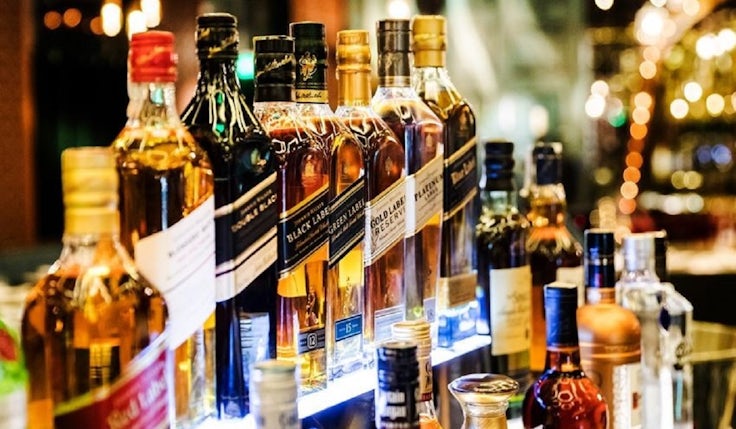 Diageo’s interim CEO Nik Jhangiani says the business had fallen into a “vicious cycle” of increasing investment in marketing to chase growth without necessarily seeing the returns.
Diageo’s interim CEO Nik Jhangiani says the business had fallen into a “vicious cycle” of increasing investment in marketing to chase growth without necessarily seeing the returns.
It is something the business is looking to remedy through the introduction of cost-saving initiatives, designed to save Diageo $625m (£471m) over the next three years.
Speaking at the Barclays Global Consumer Staples Conference in Boston on Thursday (5 September), he went into further detail about the need to rein in advertising and promotional (A&P) investment, which he said had grown at a “very high rate” even surpassing its net sales value.
 Diageo’s interim CEO Nik Jhangiani says the business had fallen into a “vicious cycle” of increasing investment in marketing to chase growth without necessarily seeing the returns.
Diageo’s interim CEO Nik Jhangiani says the business had fallen into a “vicious cycle” of increasing investment in marketing to chase growth without necessarily seeing the returns.
It is something the business is looking to remedy through the introduction of cost-saving initiatives, designed to save Diageo $625m (£471m) over the next three years.
Speaking at the Barclays Global Consumer Staples Conference in Boston on Thursday (5 September), he went into further detail about the need to rein in advertising and promotional (A&P) investment, which he said had grown at a “very high rate” even surpassing its net sales value.
“We’ve allowed that to continue happening because it was almost this vicious cycle around, well, I need to continue investing there to get the growth,” he said. “If I’m not getting the growth, I’ll put more money in and I’ll hope that the growth will come.”
Jhangiani was quick to stress that he didn’t necessarily want to cut back on the “brand building element” of its marketing spend – but pointed to the $3.66bn (£2.75bn) the business spent on its marketing in its 2025 fiscal year and said only roughly 40% of that was spent on “media scale and reach”.
He added: “Another 40% was being spent on commercial A&P, which is also linked to trade investment, and then we’ve got this big bucket of [investment] which was not working and we’ve been working very hard at bringing down.”
As to where the business will look to invest its marketing spend, Jhangiani wants to see an increase in media through digital channels where it can “leverage” and “track returns better”. It also wants to move quicker to allocate marketing dollars where growth is actually happening – while pulling inefficiency out of those failing parts of the business to reinvest.
I don’t necessarily look at [marketing spend] as we need a prescribed number of dollars.
Nik Jhangiani, Diageo
All of this – whether brands are built over digital or traditional media or scaled and reached through influencers – needs to “come to life” at the point of sale.
“I always say brand love is great, but if it’s not translating into a purchase of my product, well how good is brand love?” said Jhangiani.
The Diageo interim CEO believes that looking at marketing spend “end to end” is an area that the business has not been strong enough on in recent years.
He wants to see the business continue to “drive down” spend on wasted commercial A&P – but that doesn’t mean he expects to see an increase in promotional activity, with Jhangiani accepting it’s not about adding “more discounts” to push volume but to have marketing activity that drives activation at the point of sale.
“I don’t necessarily look at [marketing spend] as we need a prescribed number of dollars,” he said. “We need to look at it firstly in terms of growth. We also need to look at it in terms of markets, because not all markets are created equal. What are the markets in which we see breakout growth or future growth potential? And how do we allocate resources within market, within portfolio, within channel, end to end, in a more effective way?”
Diageo insists it will not ‘compromise long-term brand health’ as it chases savingJhangiani equated the number of brands in the Diageo portfolio to being similar to having “a lot of children” and that it doesn’t need to love all of its children in the exact same way. “That might sound terrible to parents but we’ve got to go where the performances and where the growth is,” he added.
There was also a discussion around the growing trend towards moderation, often attributed to younger generations. While Jhangiani accepts there is a trend towards moderation, he is sceptical of the idea that it is solely driven by health and wellness ideals, going so far as to call “bullshit” on that, and instead believes much is based around the difficult financial situation that many consumers find themselves in.
“This whole thing about Gen Z drinking less is an overexaggerated piece, but that’s probably the cohort that is feeling the most pressure on their wallet, right?” he explained.
What is important, he said, is that once the economic situation stabilises and there has been enough time to see if the trend of moderation is here to stay or not, Diageo is ready to capitalise on all consumers’ needs in this space.
“I want us to think about an opportunity set in potentially a world of moderation. Could we tap into that? And if all of this is cyclical, well, I’ve still got my business that I want to continue growing, but not just on one vector, which is premiumisation,” he said.


